

I contacted the main Meade agent here in the UK (Telescope House) with these findings and they asked to test the lens themselves. They confirmed that there did seem to be something wrong with it and contacted Meade on my behalf. Some weeks later, a brand new lens arrived in the post. It was now late June, not the best time to check out anything astronomical at 52° north. However the night of 26th June was clear so I spent the best part of what darkness we get taking photographs using this new lens with the same set up as before. My test subject, M34, was no longer accessible to me so I went looking for other possible subjects. None were fully satisfactory but I chose to image the following. M101 as I have a previous picture to compare and it is big enough to need the focal reducer, M92 and M29, two globular clusters, not as good for this purpose as open clusters but I thought they might do, and Basel 6, which I have never imaged before but looked big enough that it might fill the picture. When none of these really seemed to give me what I wanted, I imaged Vega, which was high overhead, in 9 positions across the frame in a similar way to the pictures I took previously with the Bahtinov mask. The results are below. Conclusion:
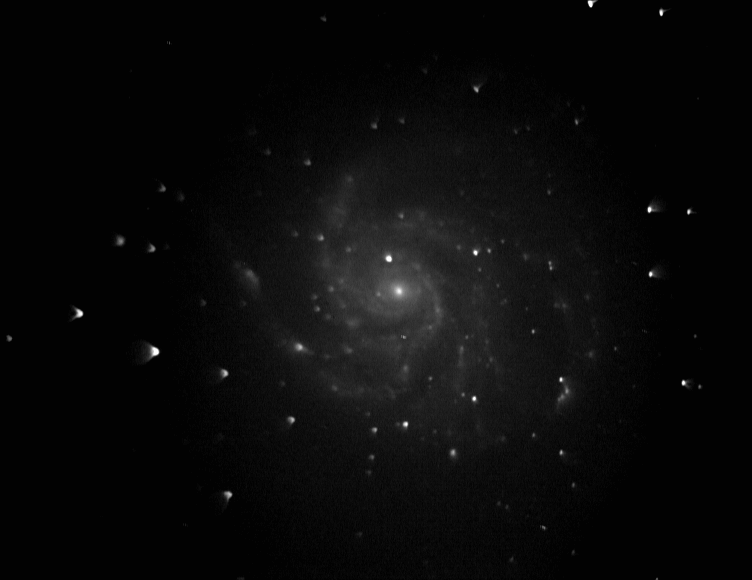
Firstly M101. This is the picture with the new lens. It is a stack of 8 pictures taken with 60-seconds exposure.
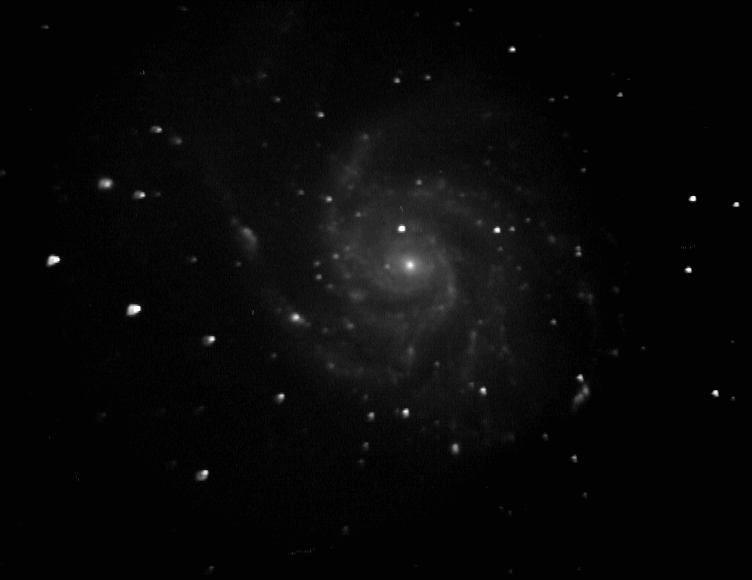
And this is the picture I took way back in May 2010 and is a stack of 6 images with 120-second exposures. I tried to keep most things the same but the exposure here was twice that of the image above. Conditions were no doubt very different. I notice that the scales of these two pictures are slightly different and I wonder if the spacing of the camera from the lens was different. (I don't tend to keep such detailed notes.)
My tentative conclusion from these pictures is that the coma is no better, and possible worse than it was with the old lens although is does appear to be more symmetrical.
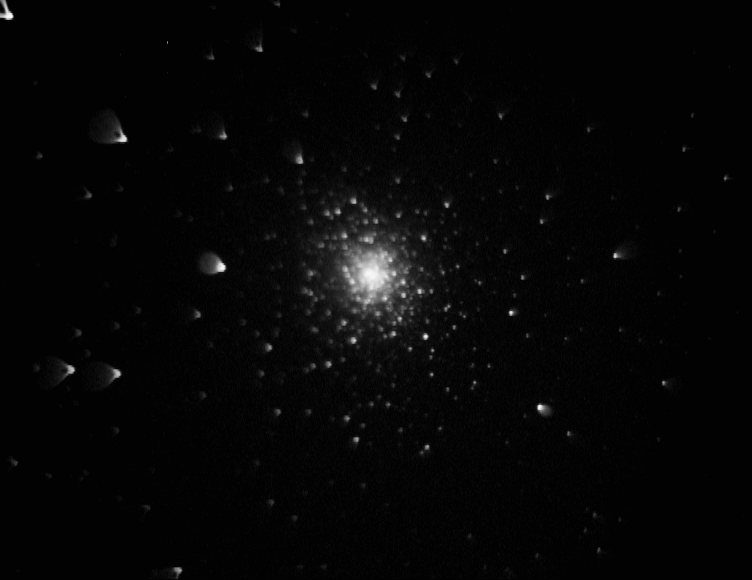
This is M92. I have not imaged this globular cluster before with these optics so I do not have a direct comparison image. My previous image was taken with a smaller camera and shows no coma at all. This picture is a single 30-second exposure.
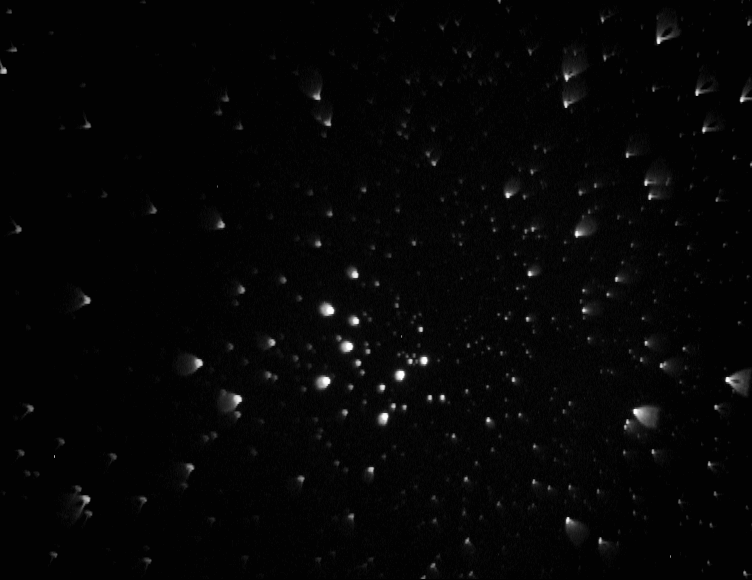
And here is M29. Again, I have not imaged this globular cluster before with these optics so I do not have a direct comparison image. My previous image was taken with a smaller camera and shows no coma at all. This picture is a single 30-second exposure.
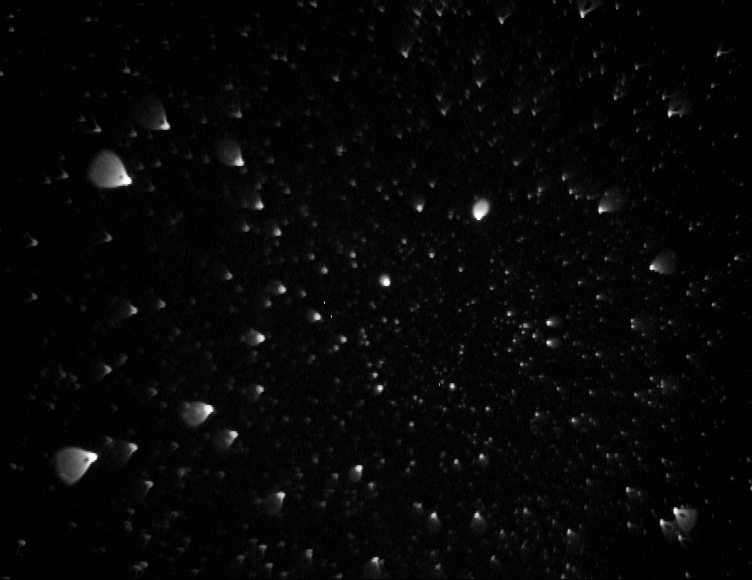
This is a single exposure of Basel 6. I have never imaged this before. I came across it by browsing Cartes du Ceil in the area of sky available to me looking for suitably large objects. It is rich in stars and shows the coma rather nicely. The coma seems slightly worse on the left compared to the right, similar to my last lens. I did check my alignment before I started this and it seemed all right, but I took no pictures and would not want to rule this out as a cause of this asymmetry at this stage.
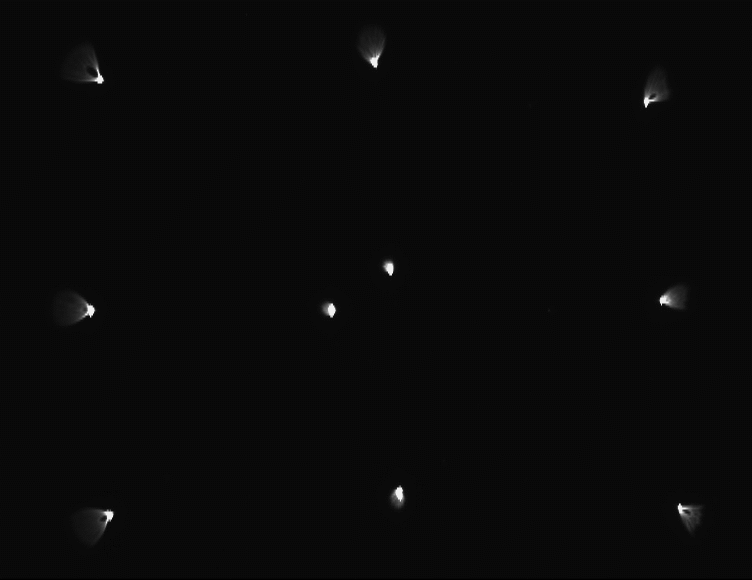
Finally, Vega imaged at nine positions in the frame, the individual pictures being combined in RegiStax. (I took two picture at the centre, neither dead centre!). The coma looks pretty symmetrical apart from the centre bottom which seems to be much smaller. I would not want to put much emphasis on this until I can repeat the experiment.
The new lens is no better than the old one apart from its symmetry. Indeed it may actually be worse. Home Equipment Part 1 Part 2 Part 3 Part 4
Part 5 Part 6 Part 8 Part 9